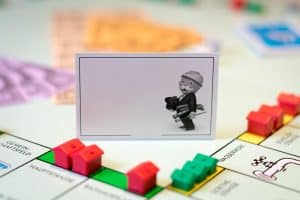Capital Meaning: The Key to Financial Freedom
What is Capital?
When you hear the word capital, the first thing that probably comes to mind is money. While this is certainly a part of what capital is, there’s actually much more to the concept than mere monetary value. In fact, understanding capital is key to achieving financial freedom and building long-term wealth. This is especially important for those in the middle and poor classes, who may feel like they never have enough money to get ahead. In this blog post, we’ll explore what capital means, how it relates to wealth building, and practical steps you can take to start building your own capital today.
Capital Definition
Let’s start with the basics: what is capital, anyway? Broadly speaking, capital refers to the tangible and intangible assets that a person or business has at their disposal. This can include money in the bank, property, stocks and bonds, intellectual property (like trademarks or copyrights), and more. Key to this definition is the idea that capital is an asset that can be used to generate additional income over time. In other words, the more capital you have, the more opportunities you have to invest in things that will make you money in the long run.
How Capital Relates to Wealth Building
So, why is capital so important when it comes to building wealth? The answer is simple: because it gives you more options. Think about it this way: if you have a sum of money sitting in a savings account that earns little to no interest, that money is essentially doing nothing for you. Sure, you could access it in an emergency, but it’s not generating additional income or growing in value. On the other hand, if you take that same money and invest it in something that has the potential to earn a higher return (say, the stock market), you’re putting your capital to work in a way that will generate more wealth over time.
Practical Steps for Building Capital
Now that we’ve established what capital is and why it’s so important, let’s talk about some practical steps you can take to start building your own capital. The first step is to start saving money. This may seem obvious, but it’s surprising how many people don’t actively save on a regular basis. Set up a budget that allows you to save a certain percentage of your income each month, and stick to it. Over time, those savings will add up and give you a solid base of capital to work with.
Another way to build capital is to invest in assets that have the potential to appreciate in value. This could include real estate, stocks, or even your own education. The idea here is to use your capital to invest in something that will generate more wealth over time. Of course, any investment carries risk, so it’s important to do your research and seek out professional advice before making any major decisions.
The Importance of Diversification
Finally, it’s worth emphasizing the importance of diversification when it comes to building capital. Don’t put all your eggs in one basket, so to speak. Instead, spread your capital across different types of assets in order to reduce your overall risk. For example, if you’re investing in the stock market, don’t just invest in one company – invest in multiple companies across different sectors. This way, if one investment takes a downturn, you won’t lose everything.
Conclusion
In conclusion, understanding capital is a key part of achieving financial freedom and building long-term wealth. By defining what capital is, exploring its relationship to wealth building, and outlining practical steps for building your own capital, we’ve hopefully helped demystify the concept a bit. Remember: building capital is a marathon, not a sprint. It takes time, discipline, and a willingness to take calculated risks. But with patience and perseverance, anyone can start building their own capital and working towards a more financially secure future.


